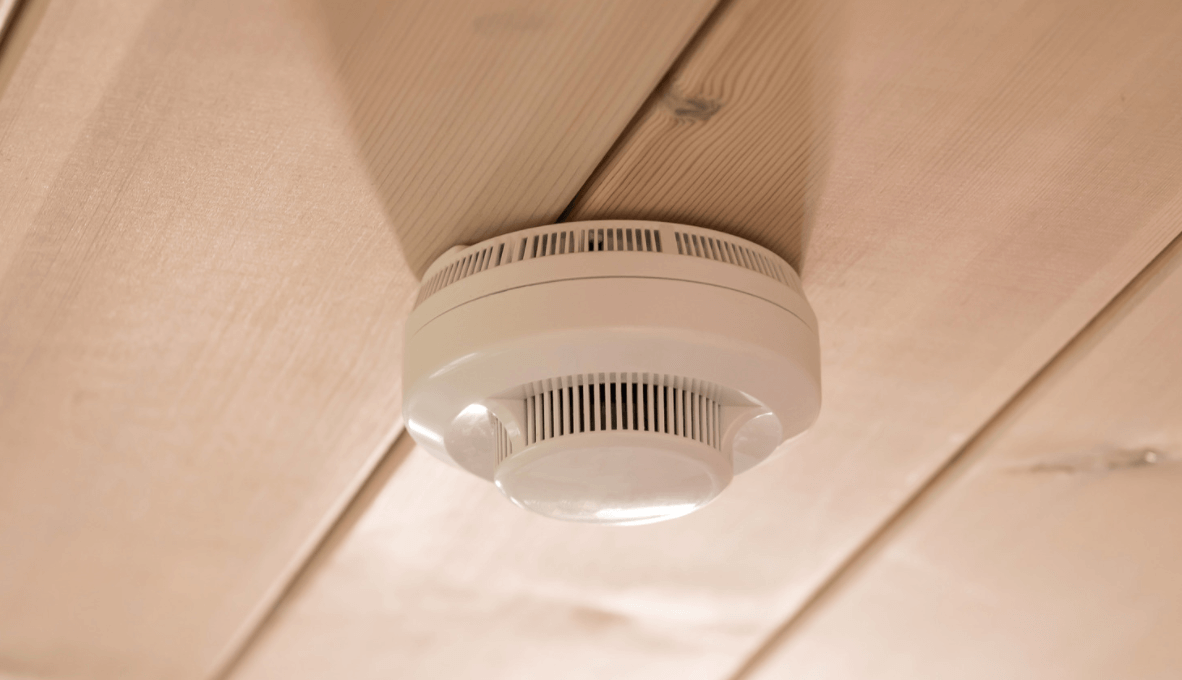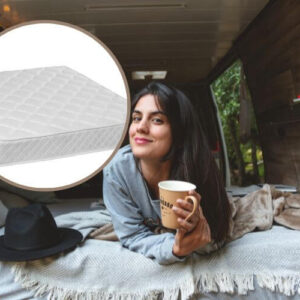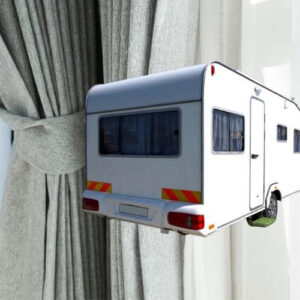Where To Position A Carbon Monoxide Detector In A Caravan? Carbon monoxide is a toxic gas known as the “silent killer” since it can’t be seen, smelled, or tasted. It is critical to maintaining as much airflow around appliances as possible when fossil fuels such as coal, wood, gas, and charcoal are used.
Carbon monoxide detectors are highly recommended in all homes, especially when an attached garage is used where cars are kept running. This includes caravans.
The Carbon monoxide detector must be placed close to, but not immediately above, any appliances. Because emissions are likely to increase with warm air circulating, having one fastened to the ceiling of your motorhome or on the end of the kitchen area cupboards would be excellent.
It would be best to have a CO detector mounted in your RV, whether it is a caravan or a Class A recreational motorhome. Carbon monoxide poisoning is the primary factor of poisoning deaths; thus, a CO detector is essential for you and your family’s safety.
Suppose your vehicle does not already have a 12v carbon monoxide detector. In that case, you can easily add a battery-powered device to alert you when CO gas levels are high and safeguard the occupants of your vehicle from this dangerous chemical.
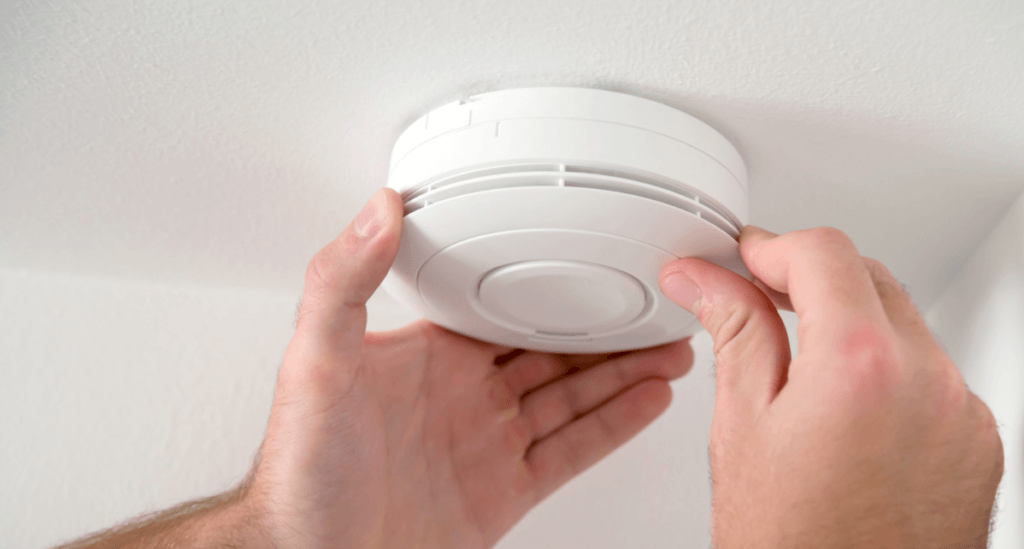
When using appliances in the caravan when driving, the main danger is that appliances may be left on with poor ventilation or blocked by a closed door. The Department of Health and Trade and Industry recommends that you have at least one carbon monoxide detector placed outside the sleeping area in the caravan.
It may be difficult to find an appropriate place for a carbon monoxide detector in small spaces as they are known to cause false alarms when there is little airflow. CO alarms are often installed in the RV’s kitchen area on a wall or ceiling at least 4 inches off the floor.
As far as possible, it should be placed where the air intake is located on appliances that use fossil fuels (heaters, cooking appliances). If that’s not possible, place it outside the space where you sleep to ensure no problems with false alarms.
If you decide to utilise a dual CO/propane alarm, it’s critical to choose the correct spot to install it. Because this sort of alarm is configured to detect propane and CO gas, the criteria for setup are somewhat more stringent.
Because propane gas is denser than air, the alarm should be located near the floor. To put it another way…
A dual RV CO/propane detector should be installed 4 to 20 inches off the ground, near suspected gas leak sources. Among the possible sources are:
Water heater
Furnace
Refrigerator
Stove or oven
Where Not To Place A CO Detector
It’s just as vital to know where not to put your CO detector as it is to know where to put it. A CO detector must not be installed in the following areas:
Any furniture, draperies, inside closets, or other obstructions that would physically prevent carbon monoxide gas from accessing the alarm’s sensor should be removed.
Windows, heaters, exterior doors, and vents must be within 12 inches or 30 cm of each other. In a nutshell, everywhere that can generate a draught.
On the outside of a building. Particularly in older RVs with no or little insulation and a higher risk of draughts.
Any gas-powered equipment within 5 feet or 1.5 meters.
When harmful amounts of CO are present, putting a CO detector in either of these areas can result in a false alarm or, worst, no alarm.
CO detectors should also be checked weekly after removing your caravan from storage to verify that they are in good operating order. It’s as easy as pushing the “test” button on the detector’s face to perform this routine maintenance (on most models).
Replace your caravan or motorhome CO detector as soon as possible if it has reached the end of its life (usually after 5 years of using it) or has begun to malfunction.
Where To Position A Carbon Monoxide Detector In A Caravan? Is A Carbon Monoxide Detector Required In A Caravan?
In addition to a smoke alarm, a carbon monoxide sensor is now required in rental caravans. It’s worth double-checking whether you’re buying a caravan from a third-party seller or a dealer that it’s equipped. It is really worth investing in a carbon monoxide sensor if one is not already installed, as it can protect lives.
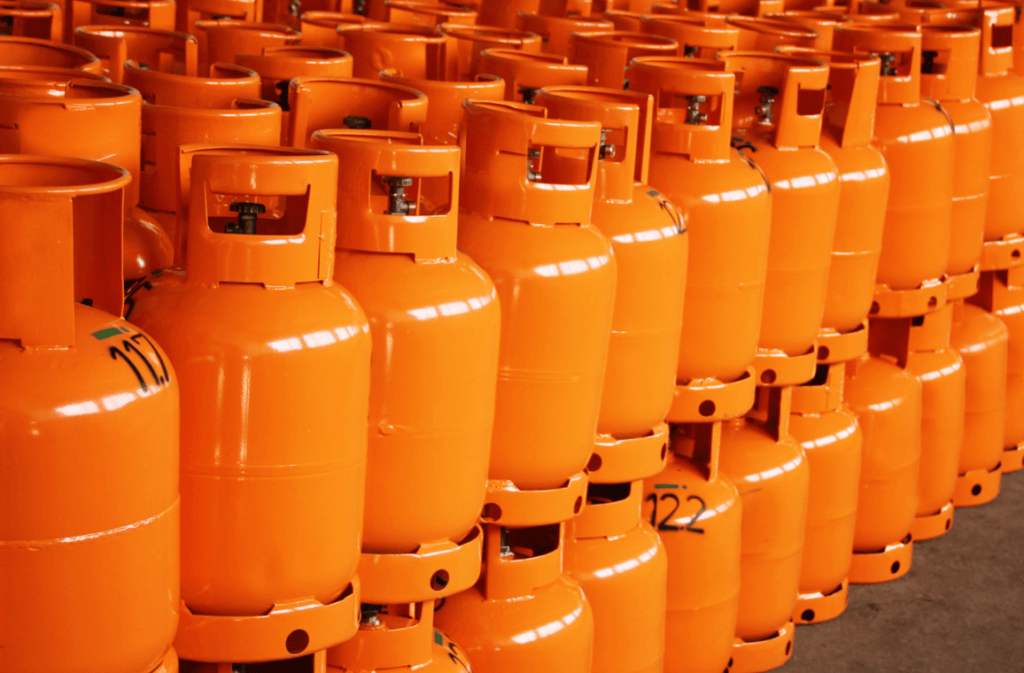
Does LPG Gas Produce Carbon Monoxide?
Carbon monoxide (CO) is a deadly gas created when any carbon fuel, such as liquefied petroleum gas or natural gas, is burned incompletely (LPG). When solid fuels such as wood, coal, petrol, and oil are burned, carbon monoxide is produced.
Do Campers Have CO Detectors Built-In?
Carbon monoxide sensors are now standard in almost all camper vans or motorhomes. However, they can and do fail. As a result, you must inspect the CO detector regularly whenever you use the vehicle.
Replace the batteries at least once a year if the equipment is subjected to excessive cold and twice if the equipment is exposed to excessive heat.
Is Carbon Monoxide Poisoning Possible In A Caravan?
While carbon monoxide is most commonly connected with household fossil fuel-burning appliances, it can also cause mishaps and deaths in caravans and boats. Carbon monoxide poisoning has been caused by faulty gas cookers, appliances, or gasoline-powered generators.
Is It Possible For Radiators To Leak Carbon Monoxide?
Carbon monoxide is the hazardous, attention-getting gas associated with defective central heating systems, and it can kill us. Radiators, on the other hand, cannot emit carbon monoxide.
Is A Gas Safety Certificate Required For A Caravan?
Most caravan parks now demand an annual gas safety inspection for privately owned static caravans. This regulation specifies that if you rent out a house, you must ensure that all gas appliances are correctly maintained and that a Gas Safe, a licensed engineer does a gas safety inspection every 12 months.
Summary
If you haven’t got one already, they’re cheap enough to buy. Please do get a carbon monoxide detector for caravan, it could save your life.
Place your CO detector in the main habitation area of the caravan. Check it regularly to ensure that it is working properly, and replace it when it expires or malfunctions.
